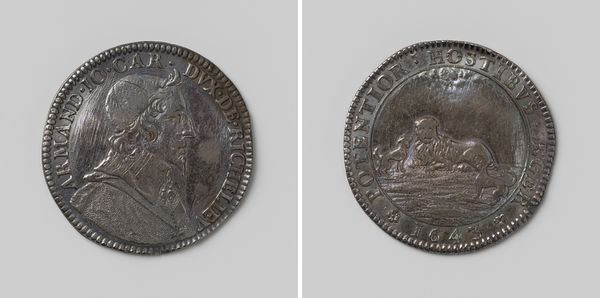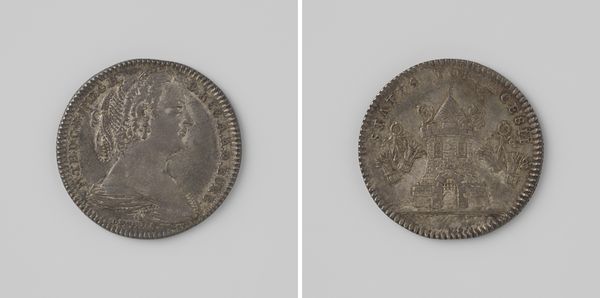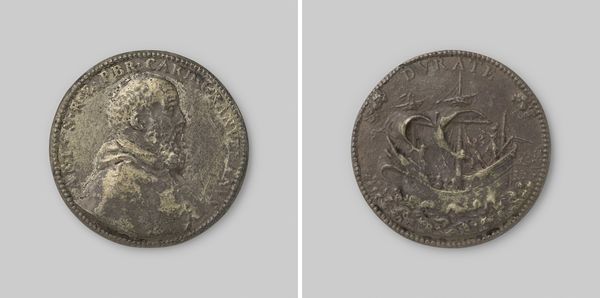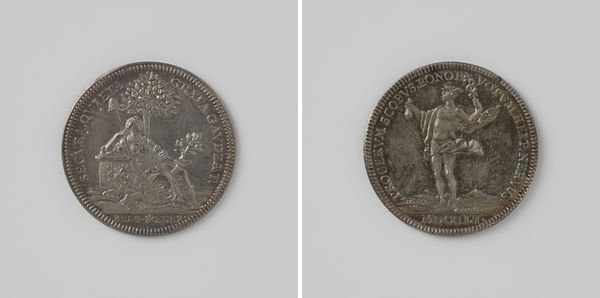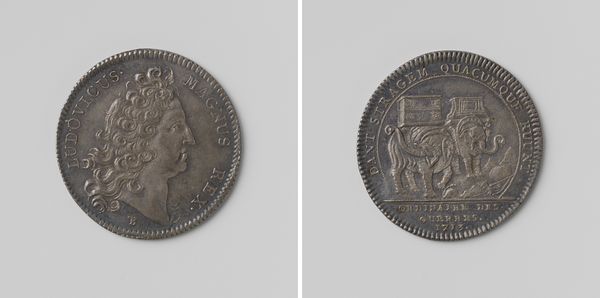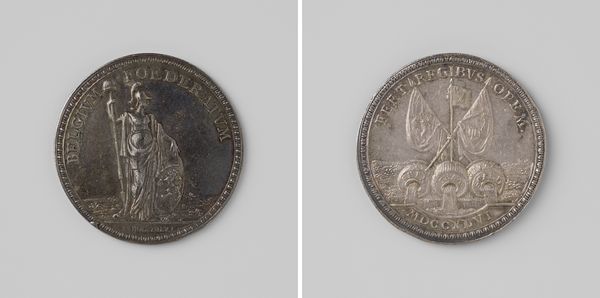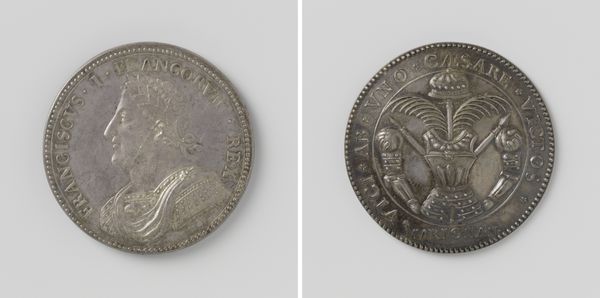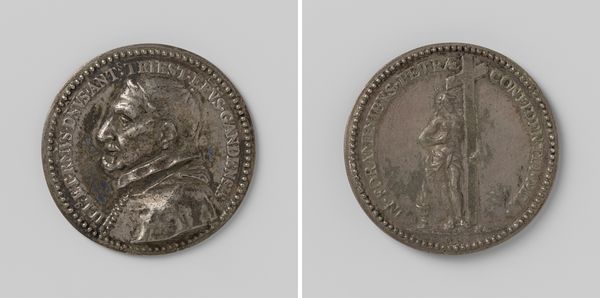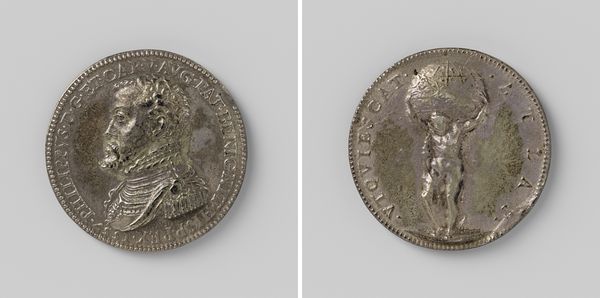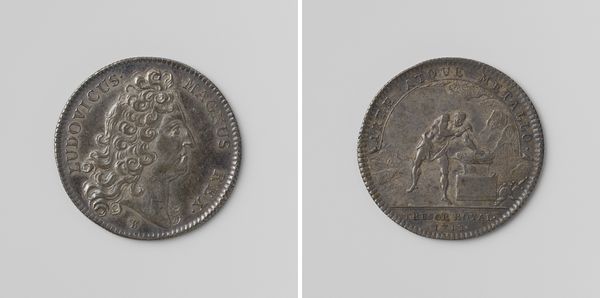
metal, relief, sculpture
#
portrait
#
baroque
#
metal
#
relief
#
sculpture
#
history-painting
Dimensions: diameter 4.5 cm, weight 20.28 gr
Copyright: Rijks Museum: Open Domain
Curator: Here we have Adriaan Waterloos' "Peace of the Pyrenees," a medal crafted in 1660. The material appears to be metal, perhaps silver, given its tone. Editor: Immediately, the precision and clarity of the relief work strikes me. Look at the details, particularly in the portrait and the lettering. It possesses a cold, stately, Baroque quality. Curator: Yes, Waterloos clearly pays acute attention to detail in the rendering of textures. Consider the minute details within Philip IV's attire. Also note how he organizes the composition by using this beautiful Latin phrase in the periphery as decorative elements to create dynamism within the composition. Editor: I am also interested in what sort of tools and labor was required. Someone had to design it, someone to carve it and someone else to reproduce it. This process, this labor is something often lost in these presentations of power. Curator: Indeed, this work is rife with symbolism on both sides. The lilies refer to the French monarchy, while the opposing coat of arms probably reflects the Spanish monarchy; a staff is superimposed. Beyond simple illustration, the work has structural integrity as a circle. Editor: This brings out an interesting material conflict in relation to its intention as this treaty was not actually upheld long after the work's conception; if its materials could speak what might they say about that disjuncture. Curator: The formal interplay creates a powerful object to commemorate this event. I would propose we consider the work beyond solely its historical association. Editor: Well, I appreciate how your analysis centers on composition and form but it should not exist isolated of material reality as the production and cultural reception is paramount in our considerations. Curator: Certainly a fruitful perspective with which to enrich my own readings. Editor: Indeed, thinking about art in conversation can expand one's understanding of both historical processes and material conditions.
Comments
No comments
Be the first to comment and join the conversation on the ultimate creative platform.
